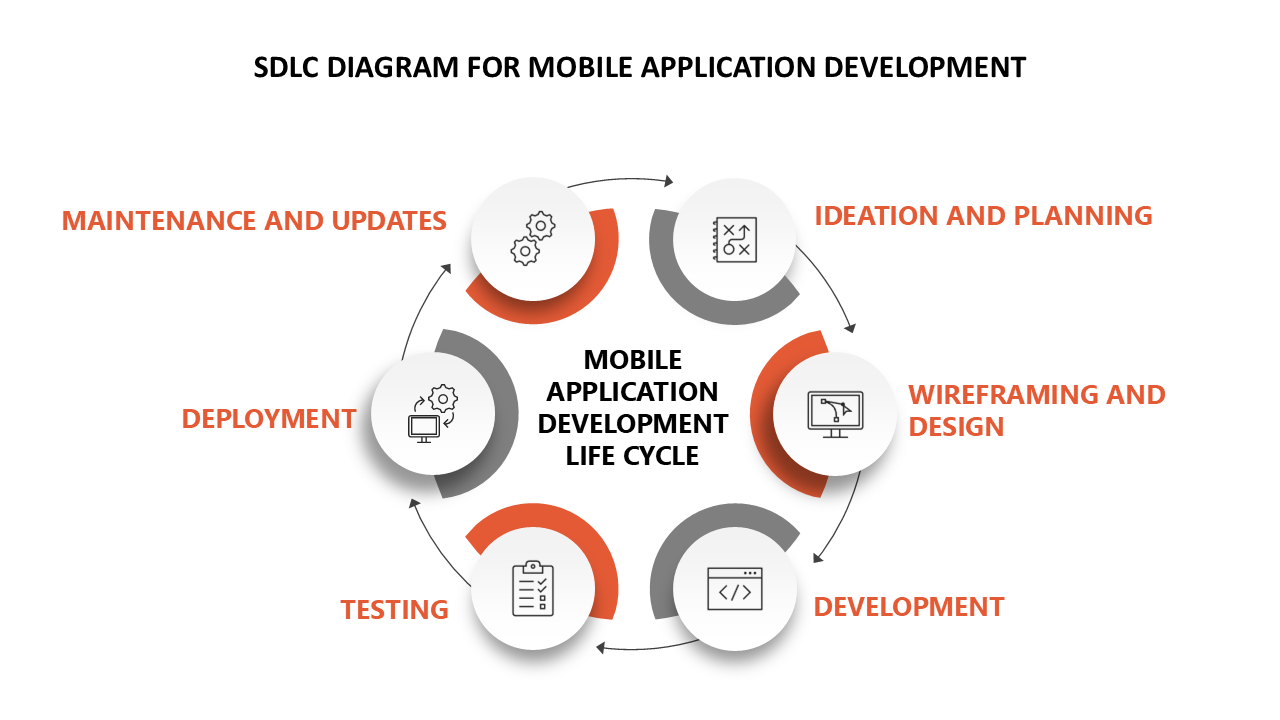Generative AI stands out with its unique ability to create original content by learning from vast datasets, making it inherently proactive. In the realm of application development, Generative AI heralds a new era of automation and creativity, enabling the generation of code, design elements, and even project plans with minimal input.
Mobile application development involves a series of steps and processes for designing, building, and deploying software applications for mobile devices. Let’s explore how Generative AI can be utilized throughout the Software Development Life Cycle (SDLC) in mobile application development.

Ideation and Planning Phase
Generative AI models have the capability to extract and synthesize requirements, identify potential gaps, and suggest additional requirements based on patterns learned from extensive datasets. By analyzing historical user feedback data, these models can generate new requirements, automate the writing of requirements, and create detailed user stories. This streamlines the initial phases of mobile application development, ensuring a comprehensive and user-centric approach.
Wireframing and Design Phase
Generative AI can significantly impact the design phase by generating design elements, user interfaces, and architectural suggestions. For UI/UX design, GenAI tools can produce multiple design options based on brief descriptions or sketches, allowing designers to explore various concepts quickly. For app architecture, GenAI can suggest design architectures based on project requirements, including scalability, security, and maintainability considerations.
Development Phase
Developers can leverage Generative AI to generate boilerplate code, jumpstarting projects swiftly and tackling unfamiliar challenges with ease. AI-powered suggestions can significantly reduce development time, leading to more secure product releases and shorter time-to-market. Specifically, Generative AI can:
- Assist in code generation and improvement.
- Identify potential bugs.
- Generate bug fixes, leading to cleaner and more efficient code.
- Detect potential errors, such as security vulnerabilities, performance bottlenecks, and code smells.
- Aid in the creation and execution of unit test cases, improving code quality.
Testing Phase
Generative AI can revolutionize the testing phase of the SDLC by automating test case generation and analysis. Large language models (LLMs) can analyze code and generate comprehensive test cases, reducing manual errors and testing time. AI tools can also visually test UI screens by comparing expected and actual screenshots to detect discrepancies.
Deployment Phase
Deployment involves delivering the finished software to users. Generative AI can optimize this process by analyzing deployment patterns and generating automated deployment scripts, pipelines, and workflows. Furthermore, it can outline the necessary steps for successful deployment.
Once the deployment pipeline is created, the entire app deployment process can be automated, allowing the app to be released to beta or production environments based on configuration setups on Apple or Google Play stores.
Maintenance and Update Phase
Post-deployment maintenance is crucial for addressing bugs, improving performance, and updating features. Generative AI can assist in performance monitoring and provide remedy suggestions. It can also generate documentation, suggest refactoring, and help identify the root cause of issues in the code.
Generative AI-driven monitoring systems can continuously monitor deployed applications for performance issues, errors, and security vulnerabilities.
Conclusion
The role of Generative AI in the mobile SDLC is transformative, enhancing every phase from ideation to maintenance. By automating and optimizing key processes, Generative AI boosts productivity, improves software quality, and accelerates development. Its ability to streamline tasks, generate insights, and provide innovative solutions makes it an invaluable asset in modern mobile app development.



